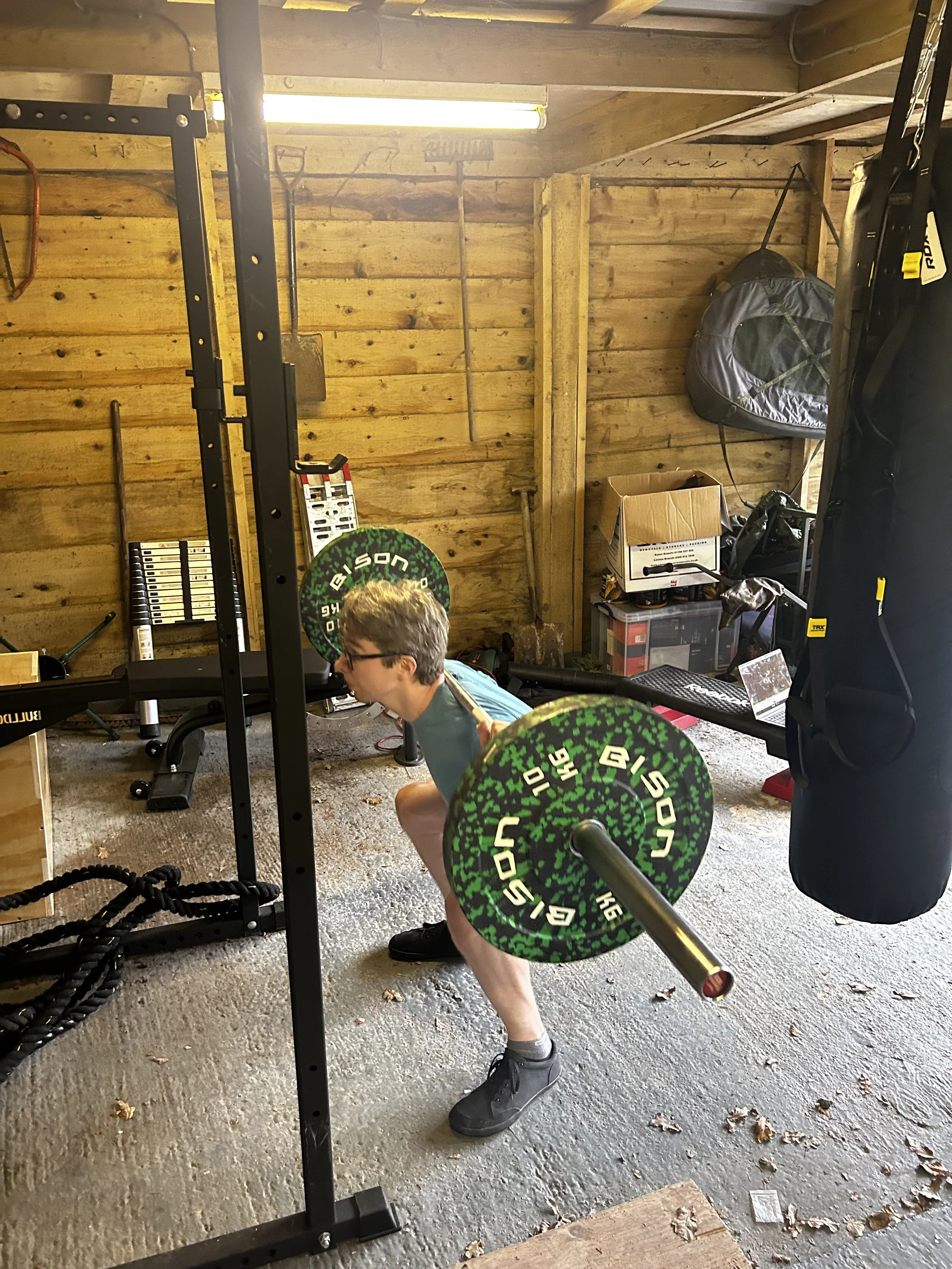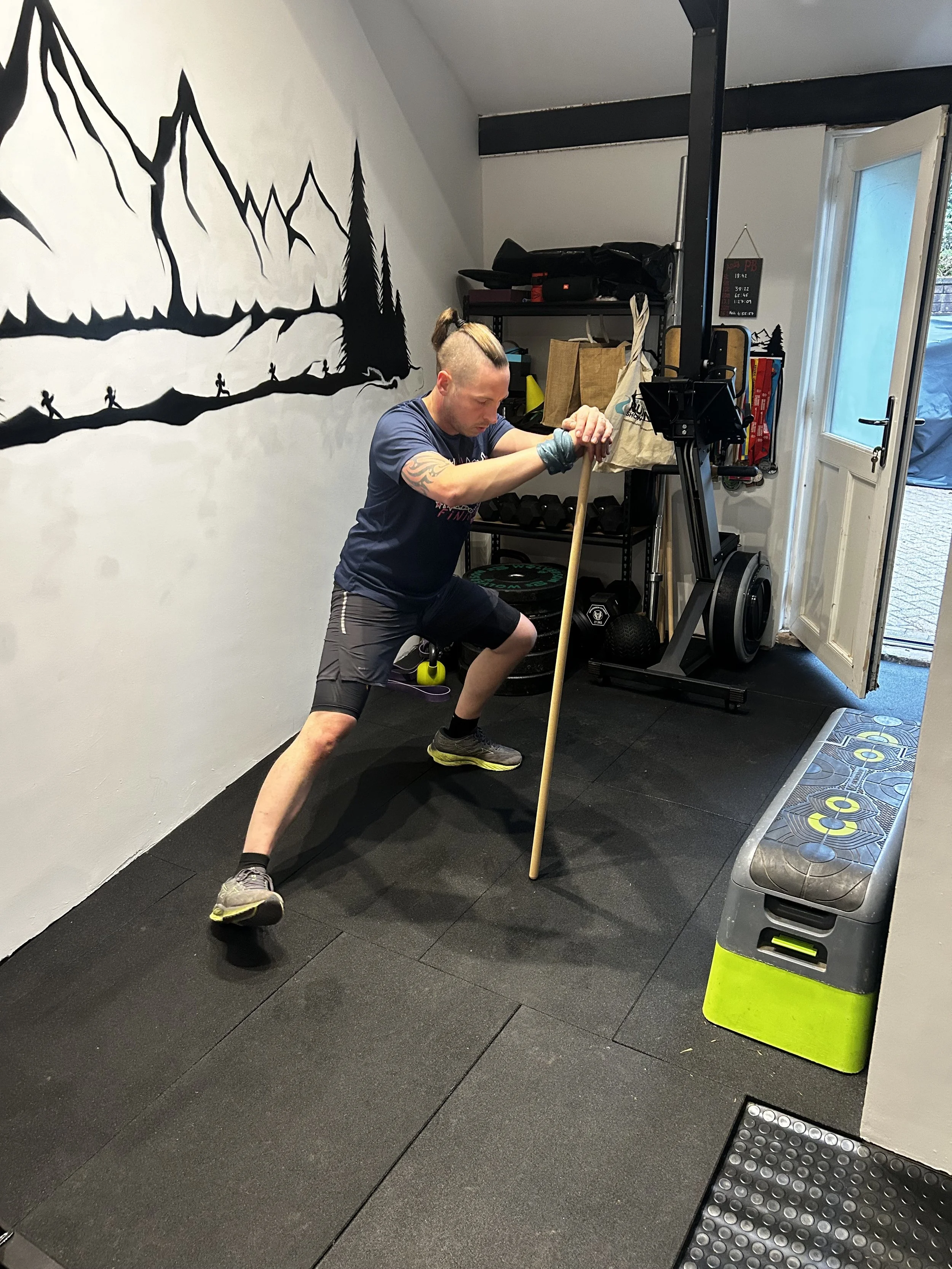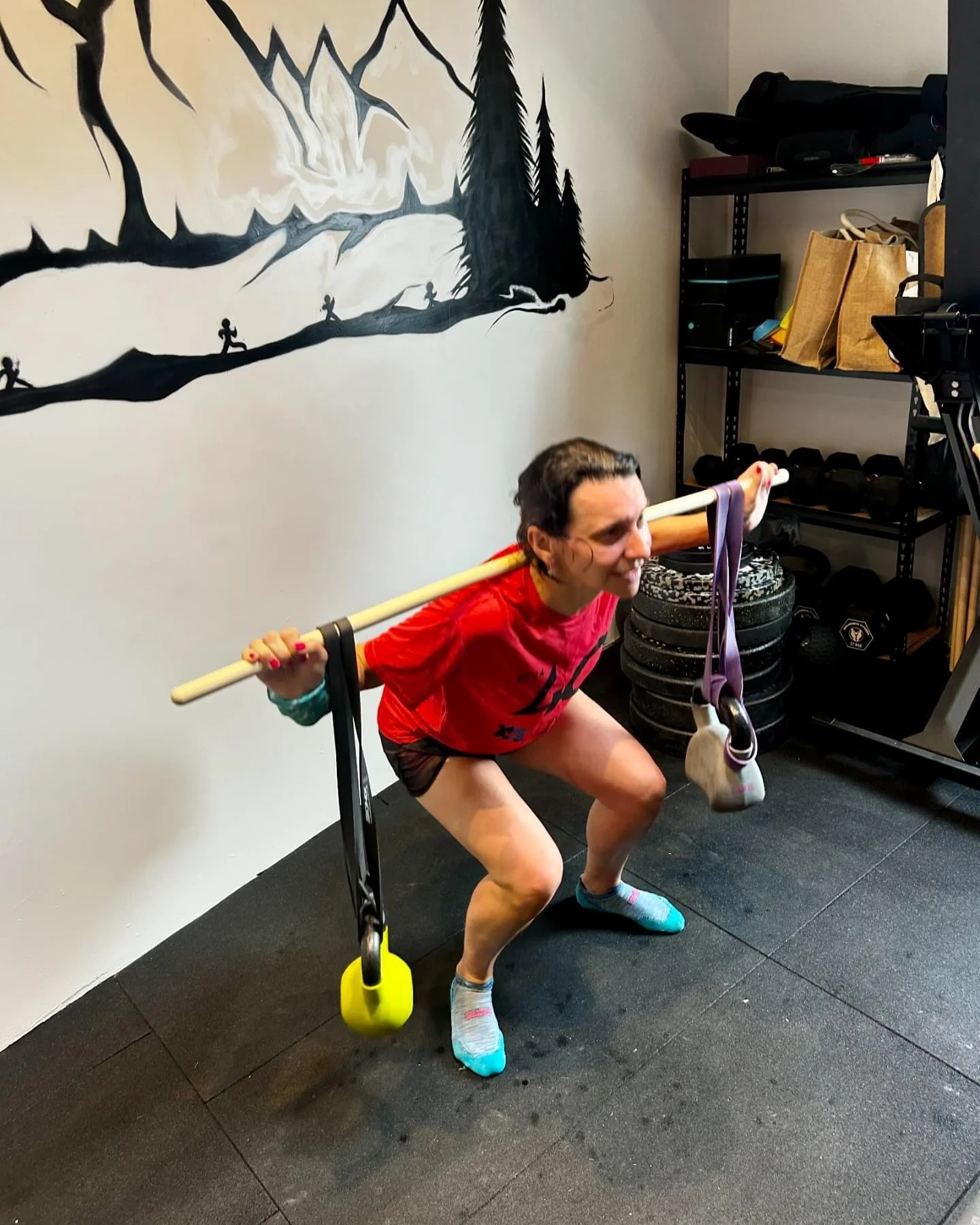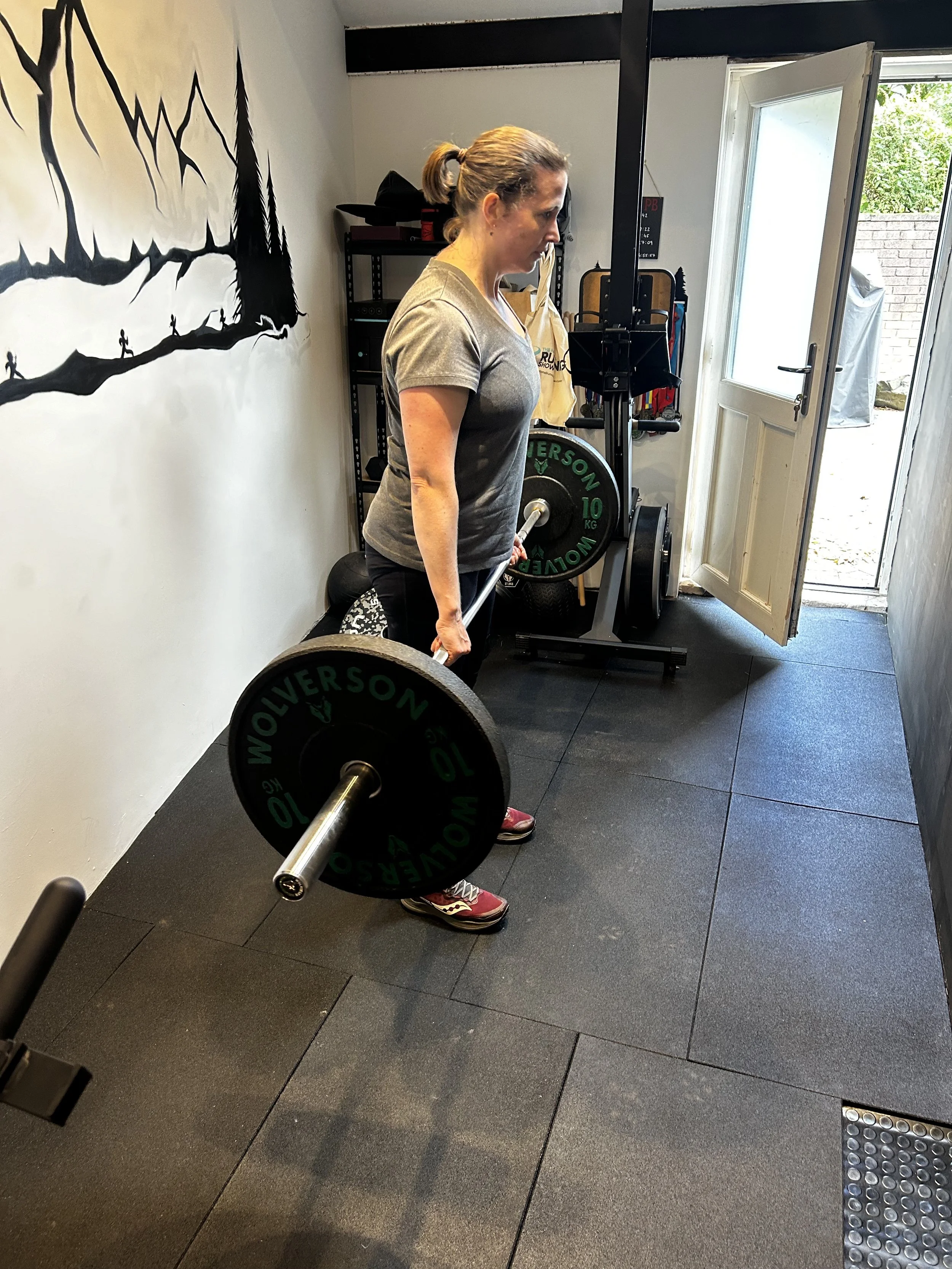Earning the Right to Progress: A Coach’s Guide to Enjoying the Journey
As a trail and ultra running coach, and strength and conditioning coach, I’ve seen countless people with ambitious goals, whether it's tackling their first ultramarathon or mastering heavy back squats. And honestly, I love it, I love how keen people are to achieve a big goal!
But here’s the thing — there's a process to progression, and ‘earning the right’ to progress is how you minimise injury and, more importantly, have fun along the way.
Let's break it down: before you’re pounding the trails for a 50k or loading up the barbell with a back squat that would impress most gym goers, you must start smaller. It’s not just for safety (though, trust me, your knees and body will thank you), but for true mastery of your sport. Progression is the way forward, not a shortcut.
Why Rushing is Tempting (But Not Ideal)
It’s natural to want to jump ahead. We’ve all seen runners sign up for a marathon right after finishing their first 10k or lifters trying to leapfrog to complex lifts like cleans without putting in the groundwork. It's exciting, but recent research suggests that ‘building gradually’ is essential not just for performance, but for avoiding injuries.
One 2020 study published in the Journal of Sports Sciences by Damsted et al, found that gradual training progressions in running significantly reduced injury risk compared to more aggressive, high-volume training plans. Similarly, in strength training, exercises like goblet squats teach stability and mobility, laying a foundation for more complex moves like back squats.
Start Where You Are, Not Where You Want to Be
Think of this like constructing a house. You wouldn't build a roof before you’ve got a solid foundation, would you? In trail running, the same principle applies. If you’re new to the sport, a 5k should come ‘before’ a 50k, because your muscles, tendons, and cardiovascular system need time to adapt.
In strength training, we have a similar mindset: you don’t go straight from never squatting to smashing back squats with plates on each side. You start with bodyweight squats, then progress to goblet squats, mastering form and mobility before you even think about loading the bar. Then comes the front squat even before a back squat!
Progression is Your Best Friend
The idea of “earning” your progression sounds tough, but it’s actually a gift. Here’s why:
- Mastery Before Mileage: In running, you’ll benefit more by nailing a consistent, strong 5k before ramping up to 10k. This sets you up with a solid aerobic base and lets your body adapt to the demands of running.
- Strength Before Complexity: Strength training is all about moving well before moving heavy. A goblet squat works on your balance, stability, and mobility, which are the key skills you’ll need for bigger lifts like front squats and then back squats. Progression gives you more power and less pain.
Not only does taking things step-by-step reduce your risk of injury, but it also allows you to ‘enjoy’ the journey without too many unnecessary setbacks. After all, there’s a lot to be said for feeling good after a run or workout, instead of hobbling around like you were hit by a truck.
Science Backs It Up (And So Do Your Muscles)
Recent research supports the value of gradual progression. A 2021 review in the ‘Strength and Conditioning Journal’ by Schoenfeld et al, emphasizes the importance of proper exercise sequencing for performance and injury prevention. Exercises like goblet squats engage stabiliser muscles and improve mobility, which sets the stage for more advanced movements.
In running, a study published in the British Journal of Sports Medicine by Nielsen et al, highlights that runners who progressively increase their weekly mileage and intensity over time have better long-term performance outcomes and fewer injuries. Just like you don’t jump from a 5k to a marathon overnight, strength and conditioning follows a similar rulebook.
A Practical Example: The Long Road to Ultra Trail Glory
Let’s say you’re eager to jump into the ultrarunning world — the allure of a 50k, 50-miler, or even a 100-miler is real. But, if you’re only just finishing your first 5k, it’s worth embracing the joy of ‘earning’ each level of distance.
Running your first 5k might feel like a small victory, but it’s more than just a checkbox. You’re conditioning your body, building endurance, and learning how to fuel correctly. The jump to 10k brings new challenges, like learning to pace and managing fatigue. When you get to half marathons, marathons, and eventually ultramarathons, your body is better prepared to handle the distance ‘because’ you’ve put in the groundwork.
In lifting, it’s the same. You want that barbell loaded up with heavy weights but start first with mastering movement. Progression isn’t just about the end goal; it’s about making every step along the way a building block for future success.
Enjoy the Process — It’s All Part of the Fun
As much as this sounds like serious talk, it’s really about enjoying the process. There’s something incredibly satisfying about feeling your body get stronger, more capable, and better equipped to tackle your goals. Instead of burning out or getting injured, you’re giving yourself the best chance to succeed and have fun doing it.
By embracing progression in both trail running and strength training, you get to celebrate all the small wins along the way. That first 5k, that first goblet squat with perfect form — those are milestones to be proud of! And when the time comes to tackle that 50k or smash a back squat PR, you’ll know you earned it the right way.
My Final Thoughts
This blog is just a thought provoker, the next time you feel tempted to skip steps in your training, try to remember that progression is the way forward. In both trail running and strength training, mastering the basics before moving on to more advanced goals isn’t about holding you back, it’s about ensuring you get there safely and successfully, having an adventure and fun on the way. After all, isn’t it more satisfying to cross the finish line feeling strong than to limp across it in pain?





